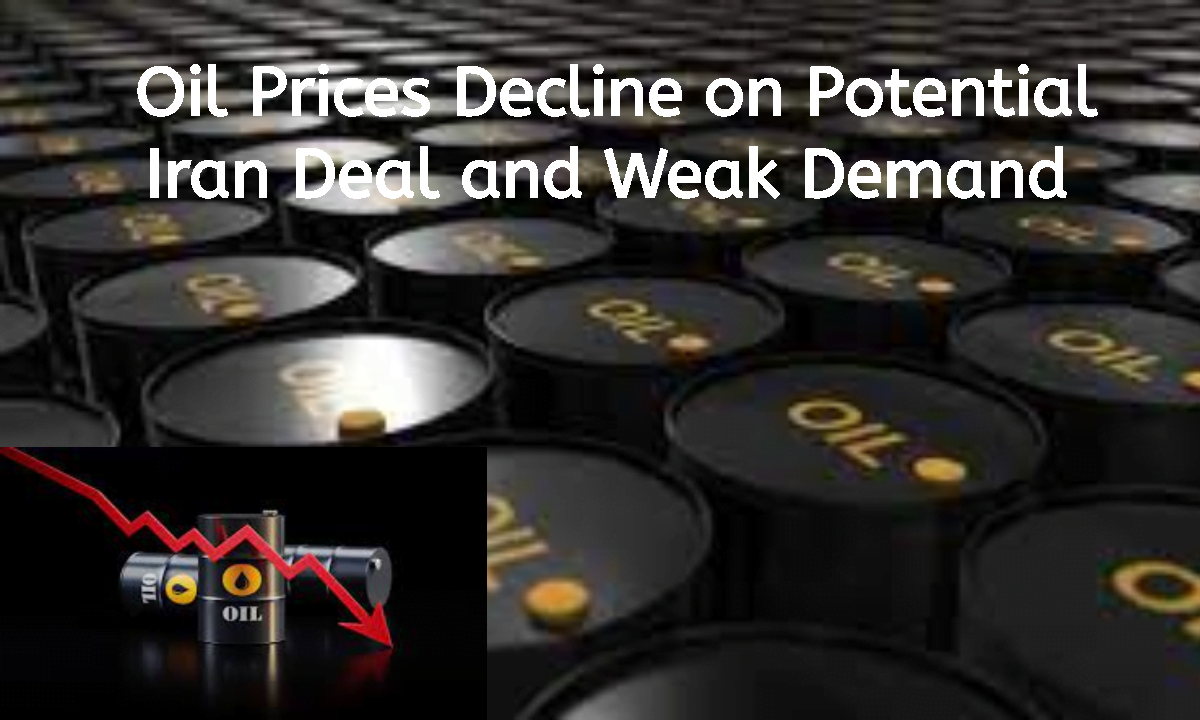In recent trading, oil prices experienced a significant drop of $3 per barrel. This downward trend can be attributed to concerns over weakened demand and reports suggesting that the United States and Iran are nearing a temporary agreement on oil exports. Despite expectations of tighter Saudi supply and the possibility of a pause in U.S. interest rate hikes, these factors overshadowed any potential positive impacts.
Section 1: Iran-U.S. Deal Prospects Impact on Oil Prices
The United States and Iran are reportedly close to a temporary agreement that would trade some sanctions relief for a decrease in Iran's uranium enrichment activities, according to sources. The decline in oil prices is a result of this development. Iran would be allowed to export up to one million barrels of oil per day and regain access to its frozen funds abroad in exchange for ceasing some uranium enrichment activities, according to reports in the media.
Section 2: Decline in Oil Prices and Market Performance
As a result of the removed news report, Brent crude saw a decrease of $2.20 or 2.86%, settling at $74.64 per barrel by 11:44 a.m. EDT (1544 GMT). Earlier in the day, it had experienced a drop of up to $3. U.S. West Texas Intermediate crude fell by $2.40 or 3.3%, reaching $70.12 per barrel.
Section 3: U.S. Sanctions and the 2015 Nuclear Deal
The U.S. imposed sanctions on Iran's oil, banking, and transportation sectors in 2018 through an executive order. This action came after the Trump administration withdrew from the 2015 nuclear deal. The reinstated sanctions aimed to exert pressure on Iran's economy.
Section 4: Gasoline Inventories and Demand Worries
The decline in oil prices was further influenced by a larger-than-expected increase in U.S. gasoline inventories, which raised concerns over weakened demand. While U.S. crude stockpiles experienced a slight decline of 451,000 barrels, the market remained apprehensive about the demand outlook.
Section 5: Saudi Arabia's Output Reduction and Market Impact
During an OPEC+ meeting held on Sunday, Saudi Arabia announced its intention to reduce crude output by one million barrels per day in July. This extra cut is part of a broader agreement aimed at limiting supply until 2024, as the producer group seeks to stimulate prices. The Saudi plan provided some support to oil prices.
Section 6: Speculation on U.S. Interest Rates and their Influence on Oil
Market attention is now turning toward the upcoming Federal Reserve meeting and its potential impact on interest rates. There is a growing consensus that the central bank will refrain from raising rates during the June 13-14 meeting. This anticipation, coupled with declining supply, could contribute to a rise in oil prices. But, a minority of economists still expect at least one more rate increase later in the year.
Section 7: Impact of Global Interest Rates and Currency Fluctuations
Following the Australian central bank's tightening of monetary policy, investors received a second reminder of the week when Canada raised interest rates. These actions demonstrate that the rise in international interest rates is still ongoing. Additionally, buyers holding other currencies were able to purchase oil at a lower price on Thursday due to the slight weakness of the US dollar.
Section 8: Summary of Price Movements and Influencing Factors
On the previous day, both oil benchmarks registered a modest increase of approximately 1%. This gain was supported by Saudi Arabia's output reduction plan. But, the rise in oil prices was limited due to factors such as rising U.S. fuel stocks and weak economic data from China, which continued to impact market sentiment.
Conclusion:
To summarize, oil prices experienced a significant decline driven by concerns over weak demand prospects and the possibility of a temporary Iran-U.S. deal. Despite expectations of tighter Saudi supply and the potential pause in U.S. interest rate hikes, these factors did not outweigh the negative market sentiment. The upcoming Federal Reserve meeting and global interest rate dynamics will likely continue to influence oil prices soon.

Post a Comment